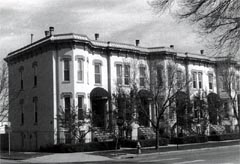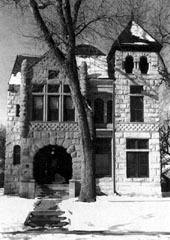Downtown Villages
Clements Historic District
Glenarm to Tremont, 20th to Park Avenue
History
|
The Clement’s Addition Historic District is one of Denver’s oldest intact residential areas. 1880s structures like the Clement’s Row House on 2201-2217 Glenarm remain as unique family housing. Nearby, the Zion Baptist church at 933 E. 24th Avenue is a historic landmark for locals. Established by former slaves in 1865, the popular church is home to Colorado’s first black congregation and was led for 50 years between 1941 and 1991 by Reverend Wendell T. Liggins, a Denver civic activist. “…far off into the country…the dwellings did look forlorn and lonesome standing way out there…”. So wrote Jerome Smiley describing the early development of the area first known as the Clements Addition. Clements is a pleasing potpourri of individual architectural styles: Queen Anne, Dutch Colonial, Italianate, 1880’s Farm Style, New Colonial Gothic Revival, and later Stick and Mission style. The District’s “hey-day” peaked after the turn of the century. For the next 70 years the neighborhood went through varying stages of disrepair. In the mid 1970s, urban pioneers began to acquire and save its residences from demolition. Today, Clements is a delight: a quiet tree-lined residential oasis in the shadows of the downtown high-rises. Antique street lights line Clements Park. The fountain of Cararra marble, carved in Italy, is named for Denver Architect Jacques Benedict. Spectacular renovations have been features in many publications from the New York Times and the San Francisco Examiner to Colorado Homes & Lifestyles.
|
| Landmarks | |
 |
CLEMENTS ROW HOUSE 2201-17 Glenarm PlaceIn wide-open Denver, multifamily, attached housing is rare. This Italianate row house, with two-story bays and decorative stone window trim is a splendid exception. It was built in 1884. |
 |
SMITH HOUSE 1435 Stuart StreetFrank W. Smith bought this 1890 rusticated, Romanesque Revival dwelling designed by William Lang and Marshall R. Pugh. Distinguished by varied and deep-set windows, a three-story tower, and minarets. South-side window slits follow the interior staircase. |
